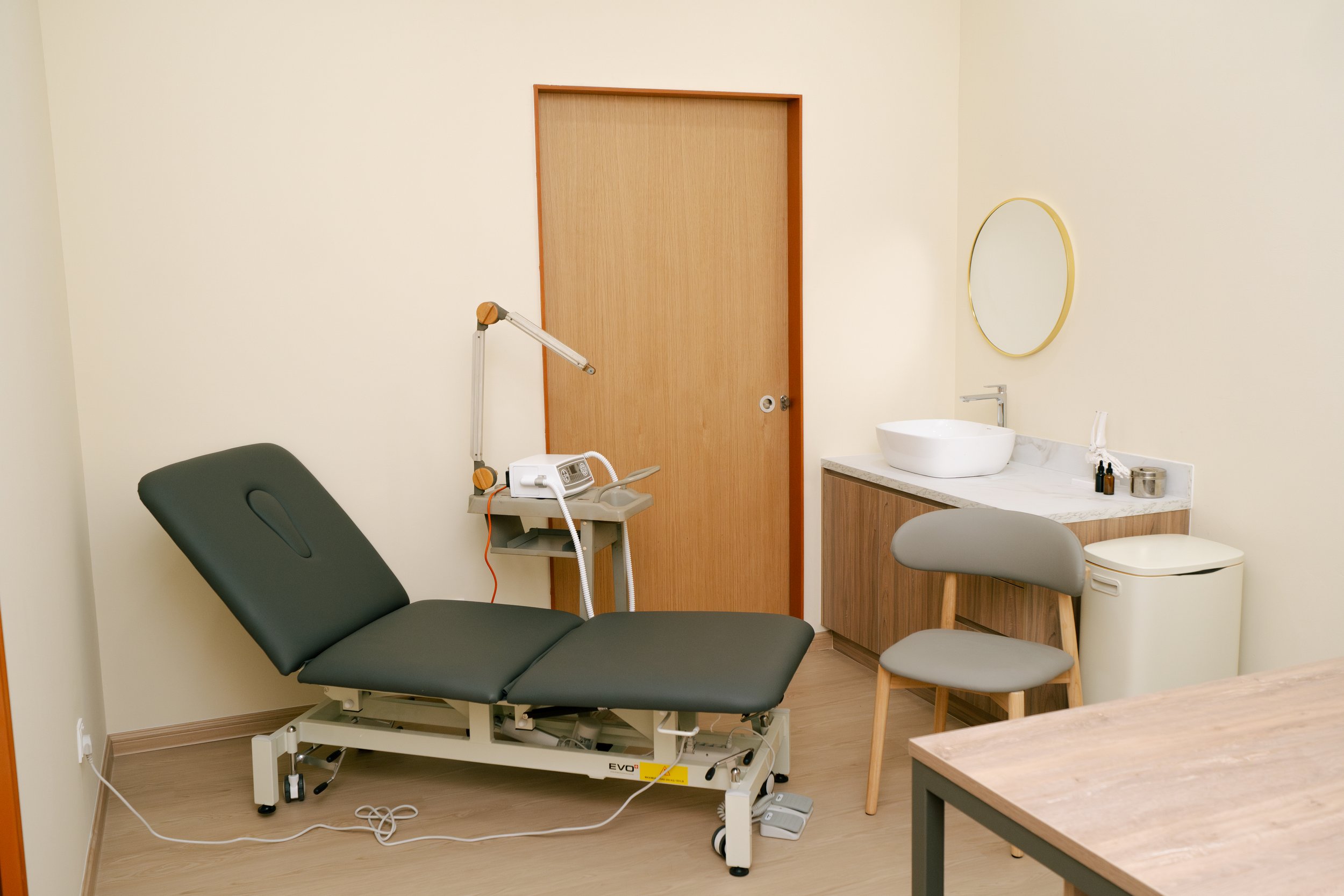
Sciatica
What Is Sciatica?
Sciatica refers to pain caused by irritation, compression or inflammation of the sciatic nerve – the largest nerve in the body. This nerve starts in the lower spine, travels through the hips and buttocks, and continues down each leg.
The term “sciatica” doesn’t describe one single condition – rather, it describes a symptom pattern: pain that starts in the lower back or buttock and often radiates down the back of the leg. Depending on the cause and severity, it may reach the calf, ankle or even the foot.
At KL Foot Specialist, we regularly see patients with lower limb nerve-related symptoms, and we work alongside your GP or physiotherapist to help identify and manage the cause of your sciatic pain.
What Causes Sciatica?
Sciatica develops when the nerve roots in the lower spine are pinched or irritated. Common causes include:
Herniated or bulging discs pressing on nerve roots
Degenerative disc disease weakening spinal discs over time
Lumbar spinal stenosis – a narrowing of the spinal canal
Spondylolisthesis – when a vertebra slips forward onto another
Piriformis syndrome – tightness or spasms in the piriformis muscle in the buttock can compress the sciatic nerve
Pelvic misalignment or leg length discrepancy
Trauma such as a fall or car accident
Poor foot biomechanics that affect gait and hip/pelvis alignment
Pregnancy-related postural changes and pressure on the pelvis
Who’s at Risk of Developing Sciatica?
Sciatica is more likely in individuals with:
Age-related disc degeneration (usually 40+)
Sedentary jobs or jobs involving repetitive lifting, twisting or long hours of sitting
Poor core strength or weak gluteal/hip muscles
Prolonged sitting or poor ergonomic posture
Diabetes (increased risk of nerve damage)
Excess body weight
Pregnancy or postpartum changes
Abnormal foot and walking mechanics that cause repetitive overload further up the body
Symptoms of Sciatica
The symptoms of sciatica can vary depending on the severity and cause but may include:
Sharp, burning or shooting pain in the buttock and back of the thigh
Pain that radiates down the leg to the calf or foot
Tingling, numbness or pins and needles in the leg or foot
Pain that worsens when sitting, standing for long periods, or climbing stairs
Weakness or instability in the affected leg
Changes in walking or posture due to pain or weakness
Pain is usually felt in one leg, though it can occur on both sides depending on the cause.
Diagnosis
Sciatica symptoms can mimic other conditions like piriformis syndrome, lower back strain, hip bursitis or referred pain from the sacroiliac joints. That’s why it’s essential to have a comprehensive assessment by a qualified health professional.
At KL Foot Specialist, we assess:
Your lower limb biomechanics
Gait and walking patterns
Leg length discrepancies
Joint and muscle function from the feet to the hips
If needed, we’ll work alongside your GP or refer you for imaging (e.g. X-rays, MRI, CT scan) to confirm the diagnosis.
Treatment of Sciatica
Sciatica often responds well to conservative care, particularly when the contributing factors are addressed early. We’ll develop a personalised treatment plan that may include:
Education and Activity Modification
Avoid aggravating movements and prolonged sitting
Modify training or lifting routines
Stretching and Strengthening
Restore balance to weak or tight glutes, hip flexors, core and hamstrings
Improve mobility and relieve pressure on the sciatic nerve
Custom Orthotics
Correct poor foot biomechanics (e.g. overpronation) that affect posture and pelvic tilt
Help with functional leg length differences
Footwear Assessment
Recommending supportive footwear to aid stability and reduce muscle fatigue
Pain Relief
Use of heat packs, NSAIDs or medication as prescribed by your GP
Stretches for Sciatica Relief
Here are a few gentle stretches you can try at home:
Knee-to-Chest Stretch
Lie on your back, pull one knee towards your chest, hold for 10 seconds. Repeat 5–10 times on each side.
Double Knee Hug
Pull both knees to your chest, hold for 10 seconds. Repeat 5 times.
Pelvic Tilt
With your knees bent and feet flat on the floor, gently flatten your lower back into the floor. Hold for 5–10 seconds.
If symptoms worsen with stretching or exercise, stop and consult your podiatrist.
What Happens If I Ignore Sciatica?
Leaving sciatica untreated can lead to:
Chronic nerve pain
Ongoing numbness or tingling
Muscle weakness or atrophy
Decreased mobility and function
Severe nerve damage in rare cases
Early treatment provides the best outcome and helps avoid long-term complications.
Prevention
While some causes of sciatica (like ageing or trauma) can’t be avoided, you can reduce your risk by:
Staying physically active with core and hip strengthening
Maintaining a healthy weight
Stretching regularly
Practising safe lifting techniques
Using ergonomic chairs and correct desk posture
Avoiding prolonged sitting
Wearing supportive shoes and addressing foot mechanics early
Think You Have Sciatica? Let’s Get You Back on Track
Our experienced podiatrists at KL Foot Specialist Podiatry can help assess the root cause of your symptoms and guide you with effective, non-invasive treatment tailored to your body.
Book an appointment today to begin your recovery.
